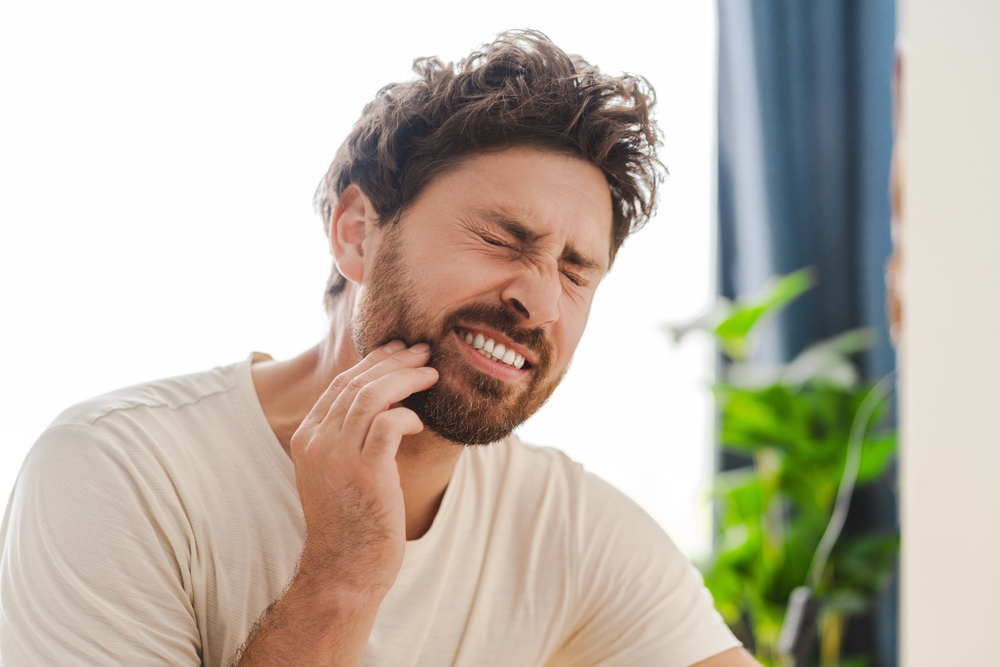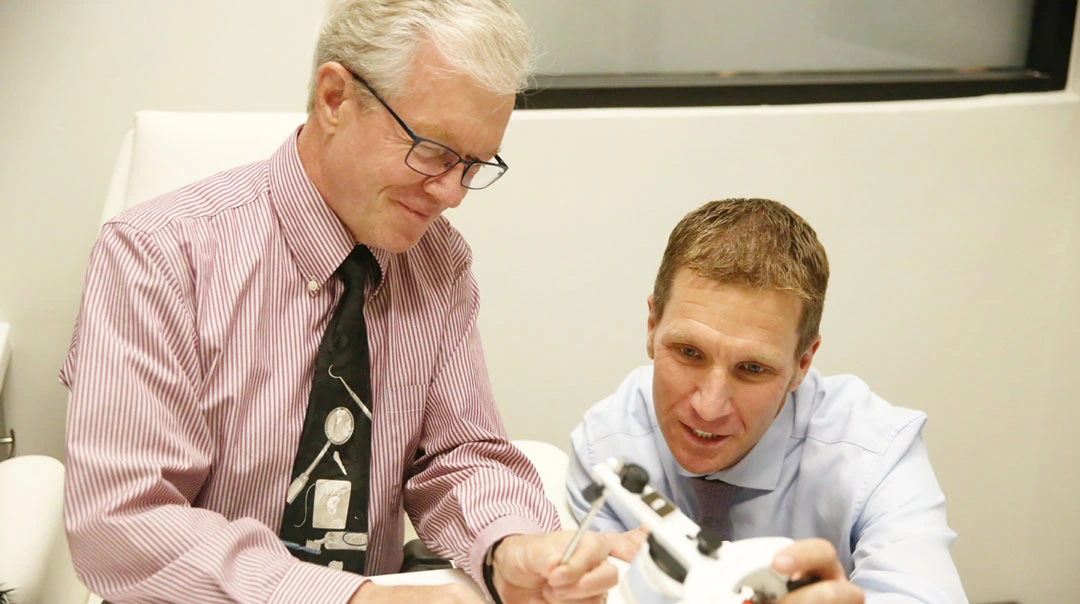 Tooth decay is a common concern, but did you know that the climate you live in can play a significant role in your oral health? Different climates, from the humid tropics to dry desert regions like St. George, UT, can impact the condition of your teeth. At Riverside Dental, we understand the unique challenges residents face in our arid environment. In this article, we’ll explore how various climates, especially dry desert climates, influence tooth decay and what you can do to protect your smile.
Tooth decay is a common concern, but did you know that the climate you live in can play a significant role in your oral health? Different climates, from the humid tropics to dry desert regions like St. George, UT, can impact the condition of your teeth. At Riverside Dental, we understand the unique challenges residents face in our arid environment. In this article, we’ll explore how various climates, especially dry desert climates, influence tooth decay and what you can do to protect your smile.
Understanding Tooth Decay: A Brief Overview
Tooth decay occurs when bacteria in your mouth produce acids that erode the enamel of your teeth. This process is often accelerated by the presence of sugars and carbohydrates, which serve as food for bacteria. Over time, these acids can create cavities, leading to pain, infection, and, if untreated, tooth loss.
Environmental factors like humidity, temperature, and dryness can influence how your mouth and teeth respond to bacterial growth and acid production, making climate a critical component of dental health.
How Different Climates Affect Oral Health
1. Humid and Tropical Climates
In humid environments, the higher moisture levels can increase bacterial growth in the mouth. While saliva is essential for neutralizing acids and washing away food particles, an excess of bacteria caused by the warm, moist conditions in tropical climates can heighten the risk of tooth decay. Additionally, the presence of fungi, such as Candida, is more common in these climates, leading to conditions like oral thrush, which can exacerbate oral health issues.
Statistic: According to a study published in the Journal of Oral Hygiene, individuals living in high-humidity regions are 20% more likely to experience dental cavities and gum disease compared to those in more moderate climates.
2. Cold Climates
In colder climates, people often consume hot beverages and sugary foods for warmth, which can contribute to tooth decay. Additionally, cold air can cause teeth to become more sensitive, leading to discomfort and potential erosion of enamel over time. The contrast between the cold air outside and heated indoor environments can also cause the lips and mouth to dry out, impacting saliva production.
The Impact of Dry Desert Climates on Tooth Decay
Now, let’s focus on dry desert climates, like the one we experience in St. George, UT. While the lack of humidity may seem like a relief compared to humid environments, it brings its own set of challenges for oral health.
Reduced Saliva Production
One of the most significant impacts of living in a desert climate is reduced saliva production, often referred to as “dry mouth” or xerostomia. Saliva plays a crucial role in maintaining oral health by neutralizing acids, washing away bacteria, and aiding in the remineralization of enamel. In a dry climate, the body produces less saliva, leading to a parched mouth. Without adequate saliva, the risk of tooth decay increases significantly.
Did You Know? Research from the American Dental Association (ADA) shows that people with dry mouth are up to 30% more likely to develop cavities. The lack of saliva allows acids and bacteria to linger on teeth for longer periods, accelerating the decay process.
Increased Exposure to Dust and Particles
In desert regions, dust and airborne particles are common, and these particles can settle on your teeth throughout the day. While they may seem harmless, these small particles can mix with the bacteria in your mouth, contributing to plaque buildup and erosion of enamel. The combination of dust exposure and reduced saliva makes it difficult for your mouth to naturally clean itself, leading to a greater risk of decay and gum disease.
Tip: If you live in a desert climate, it’s essential to rinse your mouth with water throughout the day to help wash away dust and debris. Staying hydrated not only keeps your body cool but also supports saliva production, crucial for maintaining a healthy mouth.
Temperature Extremes
In desert climates like St. George’s, temperatures can swing dramatically, with scorching days and cooler nights. These temperature fluctuations can cause tooth sensitivity, especially if you consume hot or cold beverages. Enamel, the outermost layer of your teeth, can expand and contract with these changes, making it more susceptible to cracking or erosion. Once the enamel is compromised, it becomes easier for bacteria to penetrate and cause decay.
Consumption of Acidic and Sugary Beverages
In dry desert climates, people often consume cold, sugary drinks like sodas, sports drinks, or iced coffee to beat the heat. While these beverages may be refreshing, they are often high in sugars and acids, both of which can damage your enamel. Acidic beverages can soften the enamel, while sugars feed harmful bacteria that produce acid, further eroding the protective layer of your teeth.
Local Insight: With temperatures often reaching over 100 degrees in St. George, it’s tempting to reach for sugary refreshments. Instead, opt for water or unsweetened herbal teas to stay hydrated and protect your teeth.
Protecting Your Teeth in a Dry Desert Climate
Understanding the unique challenges of maintaining oral health in a desert climate is the first step toward protecting your smile. Here are some actionable tips to help keep your teeth healthy:
1. Stay Hydrated
As mentioned, staying hydrated is critical in a desert climate. Drinking water frequently not only prevents dry mouth but also helps flush away bacteria and food particles. The ADA recommends drinking fluoridated water when possible, as fluoride strengthens enamel and helps prevent cavities.
Statistic: Studies show that individuals who drink fluoridated water are 25% less likely to experience tooth decay, emphasizing the importance of staying hydrated with the right kind of water.
2. Use a Humidifier
Running a humidifier in your home, especially at night, can help combat the dry air that causes reduced saliva production. Keeping your home environment slightly humid ensures that your mouth stays moist and your saliva levels remain optimal for oral health.
3. Limit Sugary and Acidic Foods
While it can be tempting to consume sweet or acidic beverages in hot weather, try to limit these drinks or use a straw to reduce their contact with your teeth. Consider swapping sugary drinks for water or milk, which can help protect your enamel.
4. Practice Good Oral Hygiene
Brushing and flossing are essential in any climate, but they become even more critical in desert regions where dry mouth is prevalent. Brushing twice a day with fluoride toothpaste and flossing daily helps remove plaque and bacteria, reducing the risk of decay. Using an alcohol-free mouthwash can also help keep your mouth moist and bacteria-free.
5. Visit Your Dentist Regularly
Regular dental checkups are vital for catching early signs of decay, especially in a desert environment where dryness and temperature extremes can accelerate oral health issues. At Riverside Dental, we provide personalized care to address the unique needs of our patients living in St. George. Our team is equipped with the latest technology and expertise to help you maintain a healthy, radiant smile.
Protect Your Smile with Riverside Dental
Living in a dry desert climate like St. George can be challenging for maintaining optimal oral health, but with the right strategies and professional care, you can keep your smile bright and healthy. At Riverside Dental, we understand the specific needs of our community and provide tailored solutions to help you combat the effects of the desert environment.
Is it time for your next checkup or cleaning? Don’t wait until tooth decay becomes a problem. Schedule an appointment with Riverside Dental today and take the proactive step toward maintaining your oral health in St. George’s dry climate. Call us at (435) 673-3363 or visit our website to book online. Let us help you protect your smile—your health is our priority!



Leave a Reply